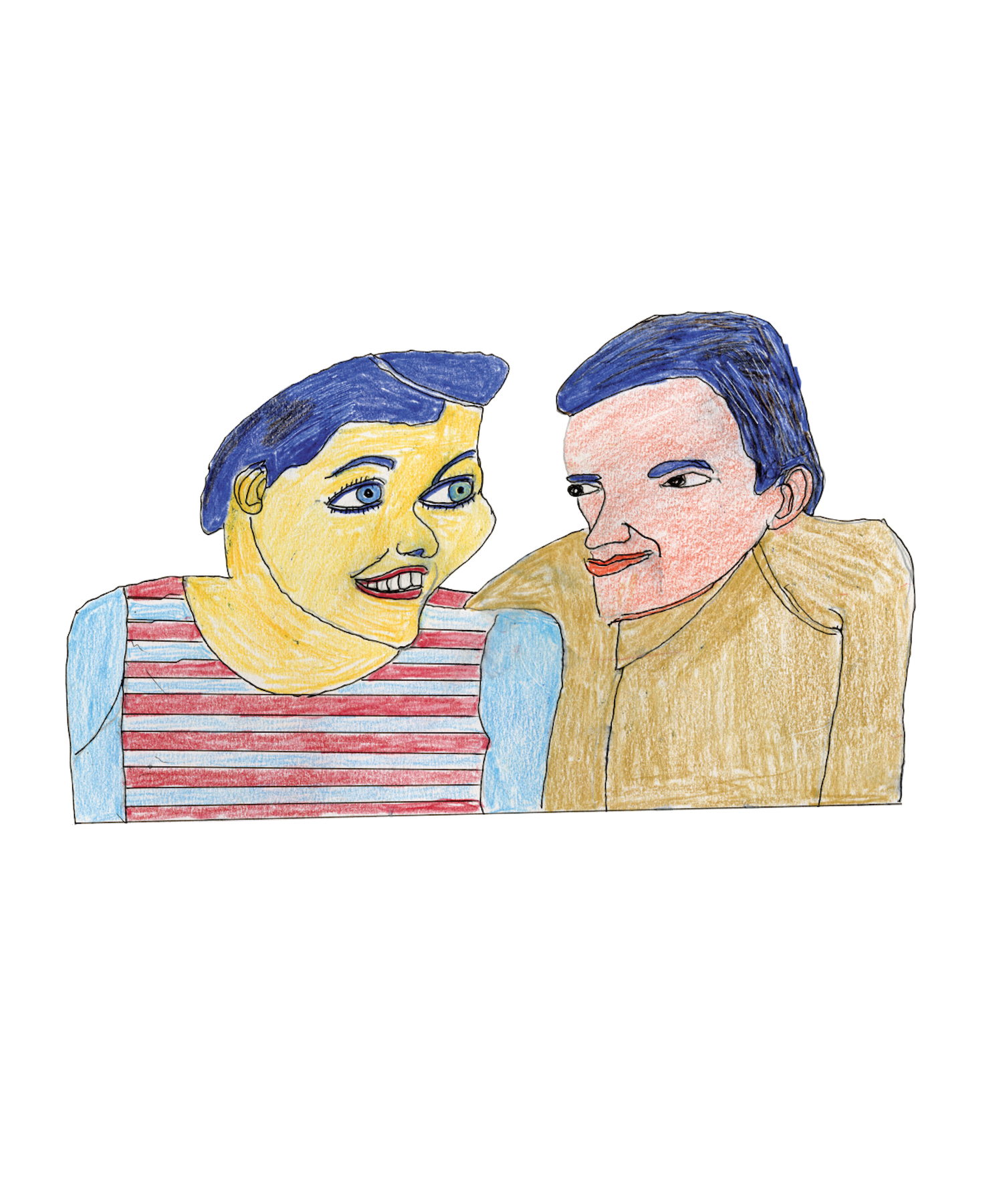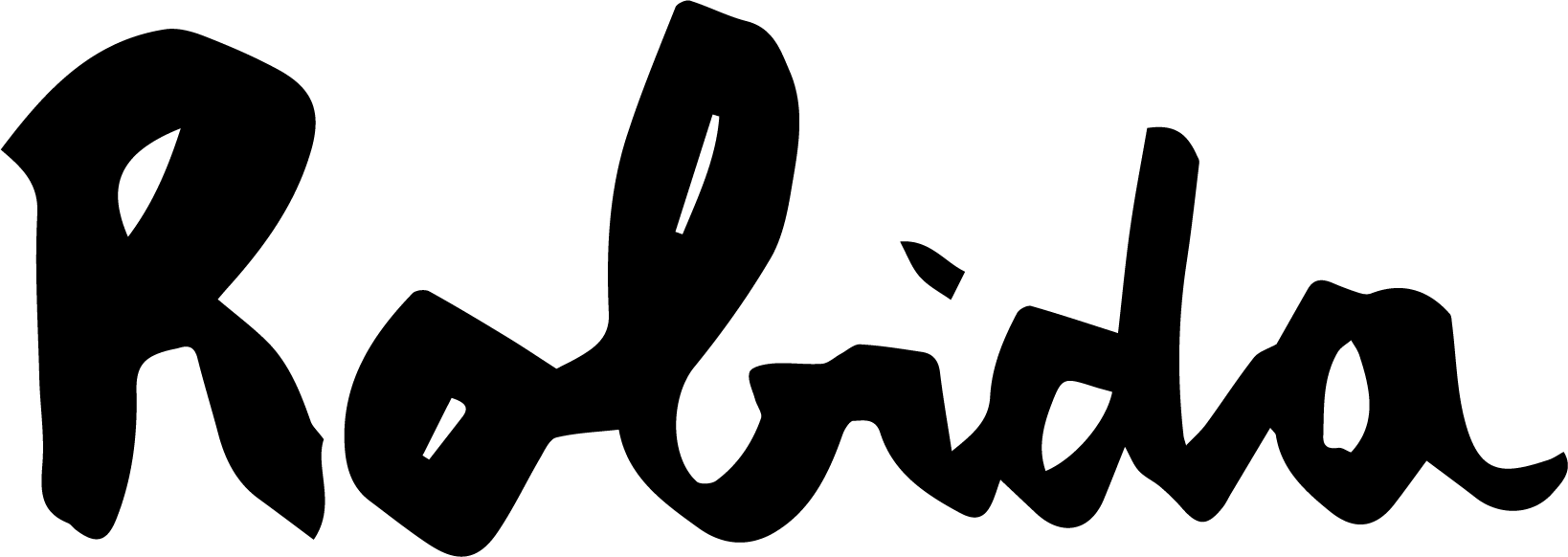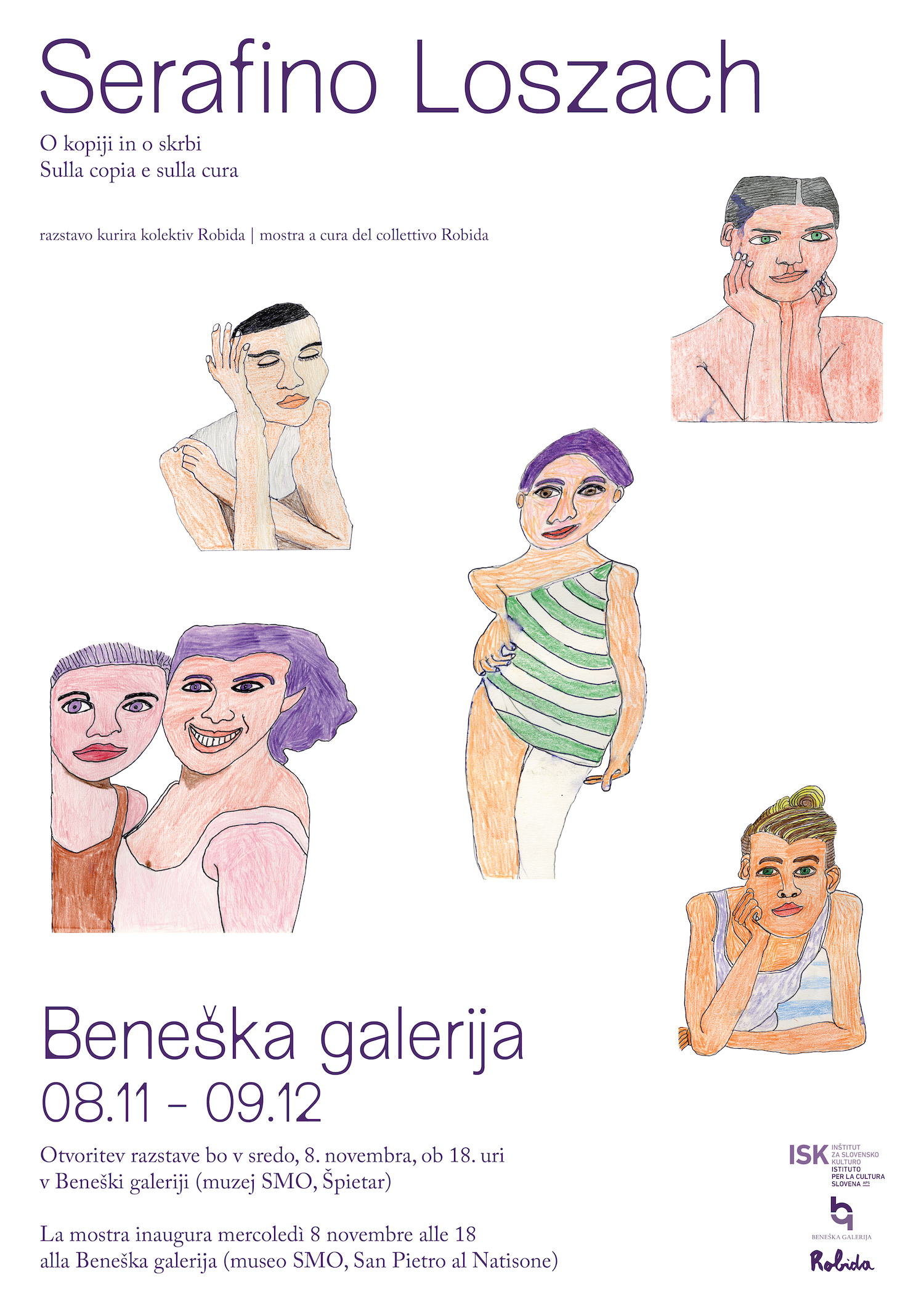Serafino Loszach
o kopiji in skrbi | sulla copia e sulla cura | on copying and cure
Opening of the exhibition: Wednesday, 08.11 at 18.00
Finissage: Saturday, 09.12
at museum SMO (San Pietro Al Natisone, Udine)
Serafino Loszach Martinkin (1921-2001) was one of those simple and extraordinary men who silently occupied a small space in this world - in his case the village of Topolò/Topolove - producing daily wonders that, when we are lucky, we manage to discover. There were some in Benečija: Tin Piernu from Tercimonte/Tarčmun, for example, whose photographs are carefully preserved by the Study Center Nediža, or Valentino Gariup from Topolò/Topolove, whose library and the traces of his passionate readings in various Slavic languages remain alive only in the stories of those who knew him.
Among these was also Serafino: farmer, miner in Belgium, woodcutter in Switzerland, day labourer and - in the last years of his life - artist, who left behind thousands of colourful sheets of paper as traces of himself.
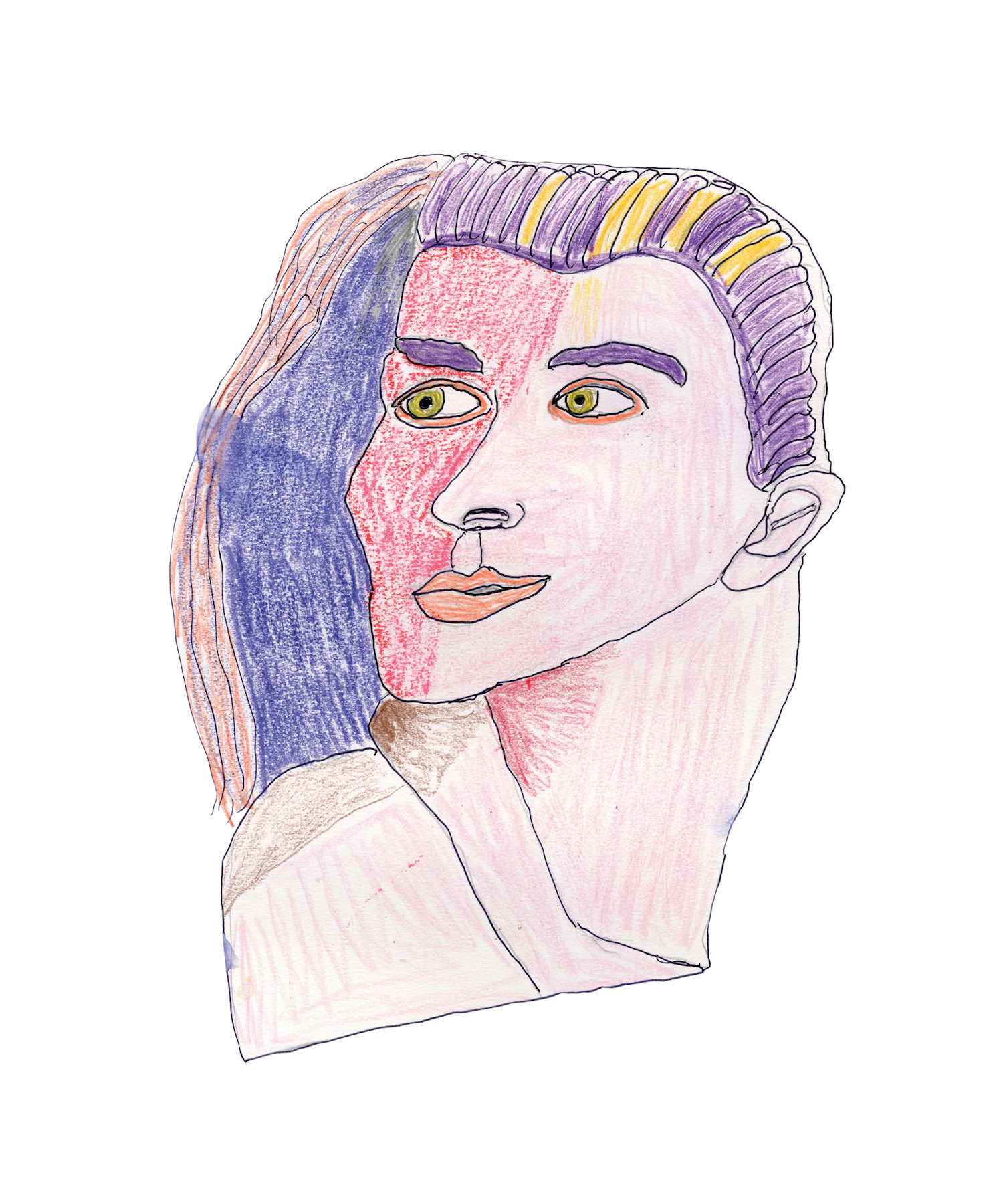
Serafino Loszach started drawing at the age of sixty-six, after he was struck by arm paresis and subsequently by a stroke that paralysed the left side of his body: during the long period of rehabilitation he discovered collage and then drawing. Sitting in his wheelchair, first in the hospital and then at home in Topolò/Topolove, he understood that drawing is his favorite way to pass free time. He copies images from magazines, especially advertisements, but also famous faces or sacred images. He takes portraits of his children and grandchildren. He copies photographs of architecture by re-imagining the rules of perspective: he instinctively replaces the linear perspective with the inverse one, in which the vanishing point is not ideally behind the painting but is rather in the viewer who looks at the image.
He often draws and redraws the same characters: leafing through his enormous archive of Fabriano F2 and F4 sheets, all contained in 5 resistant cardboard boxes, we find multiple versions of Uma Thurman, hugs between Maria De Filippi and Maurizio Costanzo, copies of Raphael and Leonardo da Vinci, images of top models from the 90s (someone perhaps can recognize them) whose faces are used for advertising perfumes or skincare products, more than one Virgin Annunciate by Antonello Da Messina. We also meet many children, ladies with little dogs, roosters, strange fish/ships, churches (especially Basilica of Saint Anthony of Padua), women with purple hair, couples kissing and many close-up portraits.
Behind each drawing is the same technique: the lines are first drawn in pencil, then traced over with a black Tratto Pen and finally the surfaces are colored with Giotto or Derwent crayons that Serafino sharpened with the knife. Those hand-sharpened coloured pencils, contained in tin cans without labels, are one of the few memories we have of Serafino, those of us who didn't get to know him because we were too young when he died. And then there are the drawings - wonderful, colourful, intense and visionary.
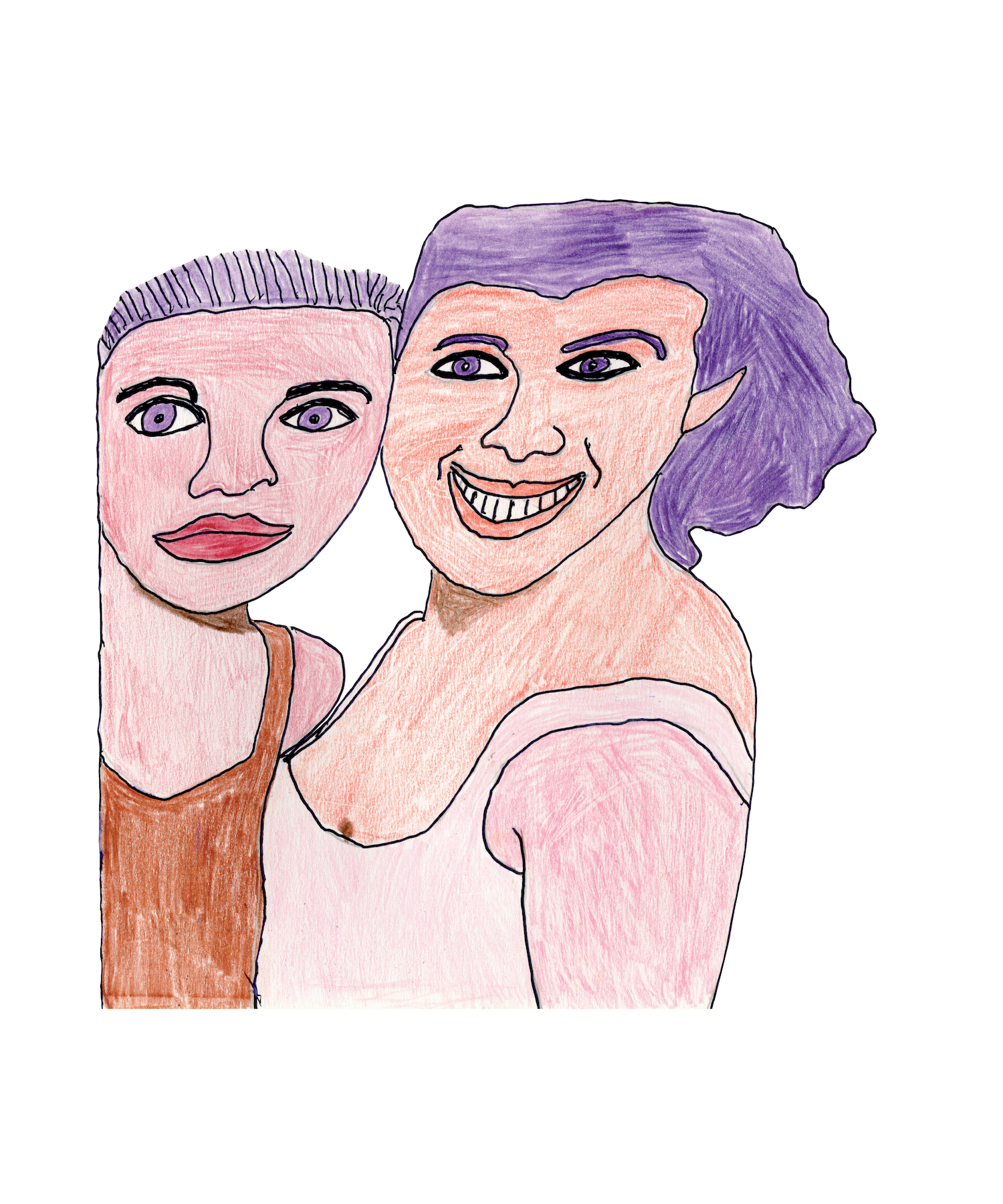
Serafino's drawings very soon began to travel the world thanks to the artists of the Stazione di Topolò/Postaja Topolove. Jan van der Ploeg, a Dutch artist who has been visiting Topolò/Topolove since 1994, has included them in several collective exhibitions, from Amsterdam to Bonn, even placing his drawings next to works by Roy Lichtenstein, the great artist of the American Pop Art movement.
The bachelor thesis of Francesca Rizzato (2012, IUAV, Industrial design and visual communication), who oversaw the digitization and cataloging of all the drawings, was dedicated to Serafino's drawings.
The copying work that Serafino carried out for fifteen years of his life gave also a profound and situated meaning to the project of the P.U.T. Pinacoteca Universale di Topolò, initiated by Guido Scarabottolo, which collects drawn copies of works of art by art enthusiasts exhibited in Topolò/Topolove in Juljova hiša.
Today it is possible to see Serafino's drawings in the houses of Topolò/Topolove, in private collections around Europe and in the P.U.T- Universal Art Gallery of Topolò.
